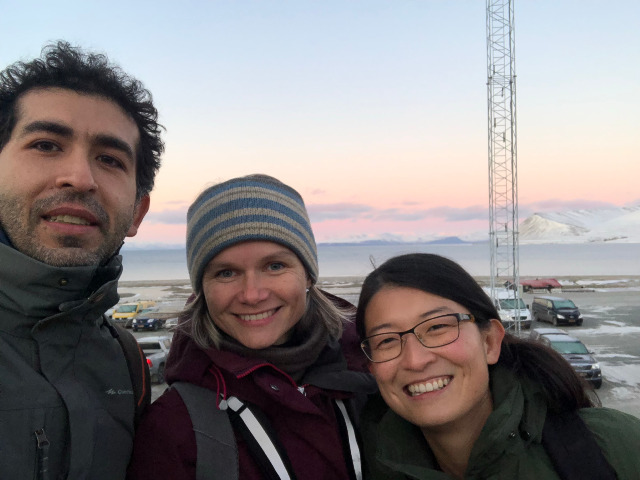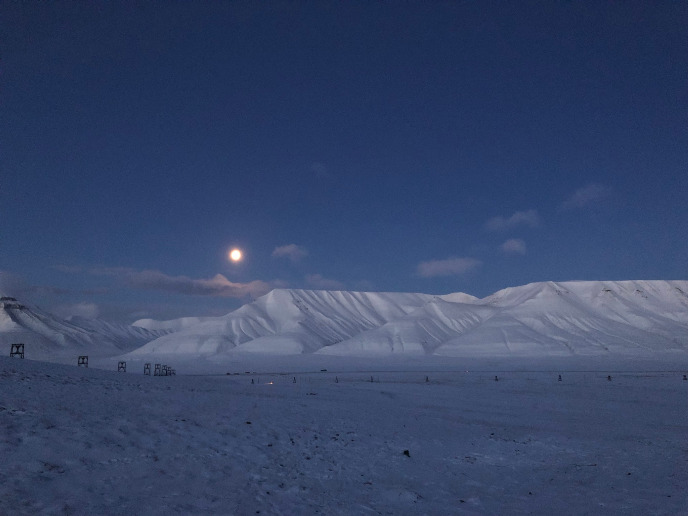A Colombian-War-Media-Narrative-Anthropologists in the Arctic

It was 4 in the afternoon on the 19th of October, 2021. I was looking out the window from the Czech Arctic Station living room in Longyearbyen. While lost in my thoughts, Zdenka Sokolíčková, my postdoc colleague and friend at the Arctic Centre, looked at me and asked, “What are you saying?” Apparently, I spent several minutes talking to myself, in Spanish, mesmerized by the frozen dessert that laid just outside my window. “I am still trying to figure out how on Earth I got here,” I answered. Around six months before, I did not know that Longyearbyen was a place, and that the place called Svalbard was a destination beyond those interested in the Seed Vault.
I am a Colombian, a cyclist, and a media anthropologist. Before coming to the Arctic Centre, I worked over ten years creating stories with children in the Colombian Amazon foothills that countered mass media messages which pictured their towns as violent places. For me, who did fieldwork in the exuberant Amazon jungle, with temperatures above 30Cº, and humidity of around 90 percent, being in the Arctic was surreal.
So, how does a Colombian-War-Media-Narrative-Anthropologists get to work in the Arctic? The answer: Stories. I’ve worked with stories most of my life, trying to discover and recount how people live and experience a place. Since February 2021, the Arctic Center trusted me, and my postdoc colleagues Zdenka and Jasmine Zhang from the Swedish University of Agricultural Sciences (SLU), to bring together long-term monitoring of natural science data and local narratives of change. We are doing this as part of the Belmont Forum funded project “Svalur: Understanding Resilience and Long-Term Environmental Change in the High Arctic.”
My first visit to Svalbard combined a bit of everything. Our arrival and long stay in Longyearbyen—a dynamic town with 2500 people—was a confronting experience of how we, as a species, can transform such a tough and marvelous natural landscape into a “normal” occidental-multicultural town. (I wouldn’t dare call this type of human settlements forms of adaptation!) Within the magic of experiencing the Polar Jazz Festival, meeting people from the Norwegian Polar Institute (NPI), revisiting the archipelago human occupation in the Svalbard Museum, attending a children event at the local highschool, embracing the warm welcome from the local Protestant Church, and attending a scientific forum at the local library, being in the north seemed pretty regular if it wasn’t for the landscape and the weather.
But what got me into understanding what the Arctic means and feels like was spending a night outside. During one of our weekends at Svalbard, we walked to Endalen: a marvelous desert valley standing at a 3 hour walking distance from Longyearbyen. I find it difficult to describe the experience. In between a -25C night, with a full moon, with the intense sound of the valley’s silence, and a spectacular dancing sky (Northern Lights I mean), the experience of human vulnerability was inescapable. That night made me think about trappers and the human willingness to live in unlivable human places.
One year into this gigantic task of story hunting, it has giving me a new dimension of life, time, climate and weather. Even my way of understanding my conflicting tropics was changed forever. But, for the time being, I will keep enjoy this unique experience.

Over de auteur
Esteban is post-doc at the Arctic Centre working for the Svalur-project

